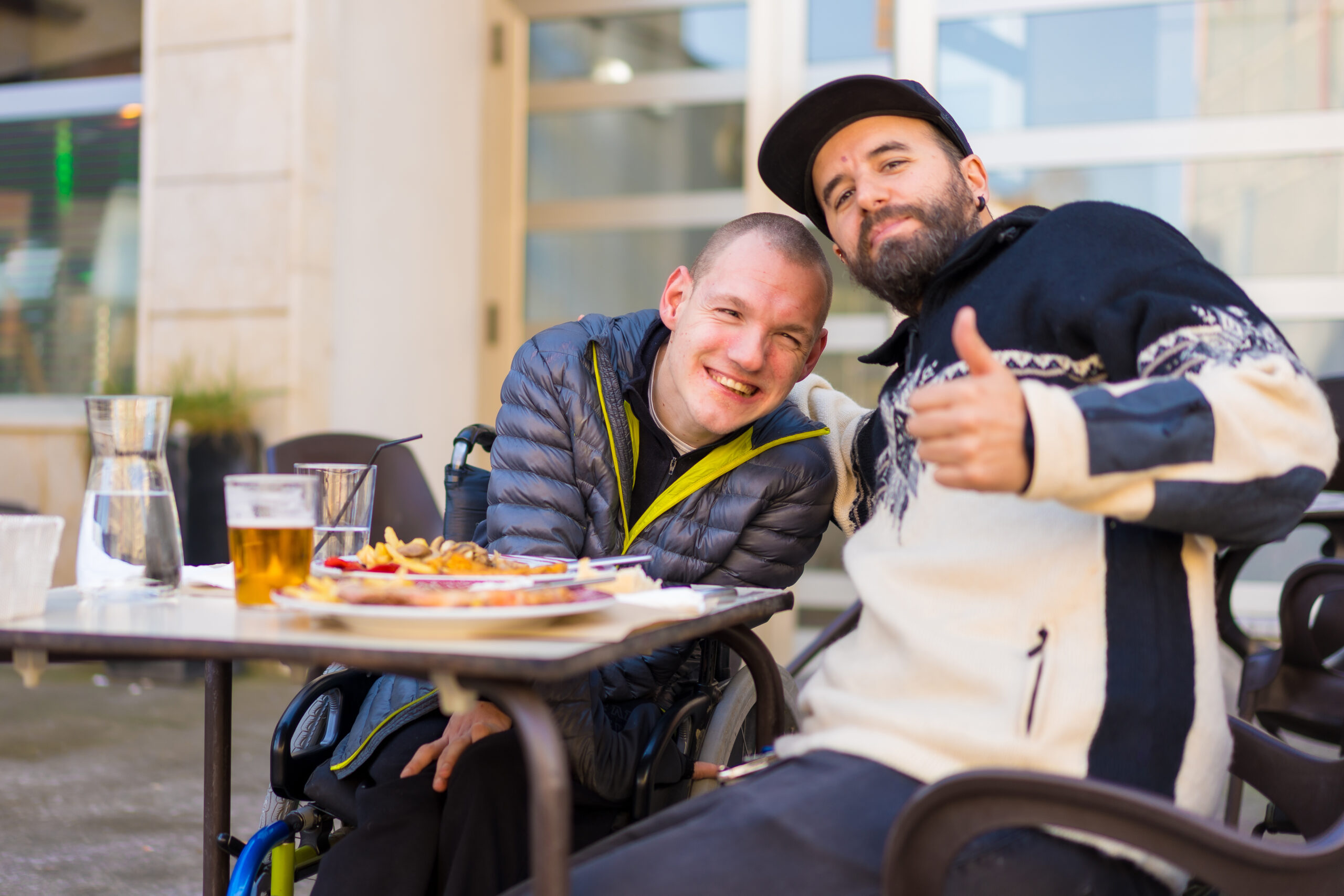In a world striving for inclusivity, engaging with people with disabilities isn’t just a checkbox; it’s a cornerstone of a thriving and equitable society.
Picture this: a community where everyone, regardless of their abilities, is not just included but actively engaged. In this article, Bloom Healthcare explore 5 practical tips to facilitate meaningful interactions with people with disabilities in 2024.
Tip 1 – Start with Empathy
To truly connect, start with empathy. Actively listen and seek to understand the experiences of people with disabilities. For instance, asking open-ended questions and making eye contact demonstrates respect and encourages open communication. Put yourself in their shoes, gaining a firsthand understanding of their perspectives. It’s not just about hearing; it’s about truly listening and appreciating the richness of diverse experiences.
Tip 2 – Use Person-First Language
Language matters. Briefly delve into the history of person-first language and why it became widely adopted. This linguistic choice places the person before the disability, not as a matter of political correctness, but out of respect. Offer examples of person-first language, encouraging readers to adopt this approach in their interactions. Address common misconceptions, clarifying that it’s a simple yet powerful way to show consideration for the individual behind the disability.
Tip 3 – Make Physical Interactions Accessible
Physical spaces should never be barriers. Emphasise the importance of considering not only physical barriers but also sensory barriers when designing accessible spaces. For example, low-lighting options, noise-cancelling headphones, and clear signage accommodate people with sensory sensitivities. Provide practical tips for enhancing physical spaces, from ramps and accessible restrooms to thoughtful sensory considerations. Empower readers to be proactive in identifying and eliminating barriers that might hinder the participation of people with disabilities. Accessibility is a shared responsibility.
Tip 4 – Embrace Universal Design
Enter the realm of universal design – a concept that goes beyond accommodation to create environments and experiences accessible to everyone. Share examples of universal design principles, from ramps and curb cuts to the digital world of accessible websites. Encourage readers to champion universal design in their communities and workplaces, recognising its power to build inclusivity into the very fabric of our daily lives.
Tip 5 – Challenge Assumptions
Challenge your assumptions; recognise disability as a spectrum. Provide specific examples of common misconceptions about disability, such as the myth that people with disabilities are always helpless or that they are all defined by their disabilities. Encourage readers to approach interactions with an open mind, avoiding generalisations. See beyond preconceived notions and get to know people with disabilities as individuals with diverse talents, passions, and perspectives. For instance, avoiding generalisations and getting to know people with disabilities as individuals can foster deeper connections and understanding, leading to more positive interactions.
“Engaging with people with disabilities isn’t just a checkbox on the path to inclusivity; it’s the journey itself.” – Petra Wilkinson, Director, Bloom Healthcare
As we navigate the complexities of human interaction in 2024, implementing these practical tips becomes a catalyst for positive change.
Let’s not merely envision a more inclusive world; let’s actively create it.
Implement the tips provided in this article and become advocates for disability inclusion in your communities.
Actively engage, use person-first language, prioritise accessibility, embrace universal design, and challenge assumptions. Emphasise the importance of ongoing learning and self-reflection in the journey towards inclusivity.
By doing so, you contribute to a future where everyone feels valued, respected, and included, regardless of their abilities.
At Bloom Healthcare we actively work towards a future where everyone feels valued, respected, and included, regardless of their abilities.




